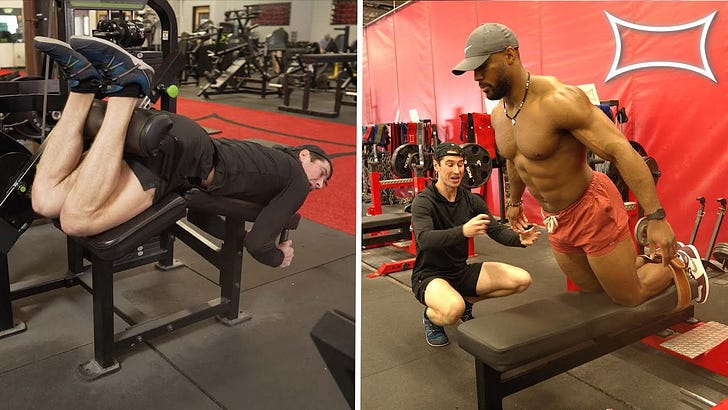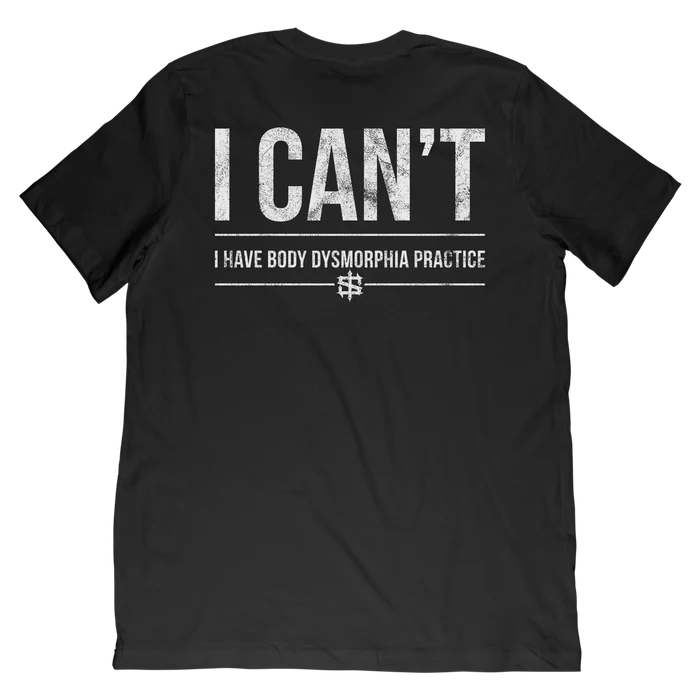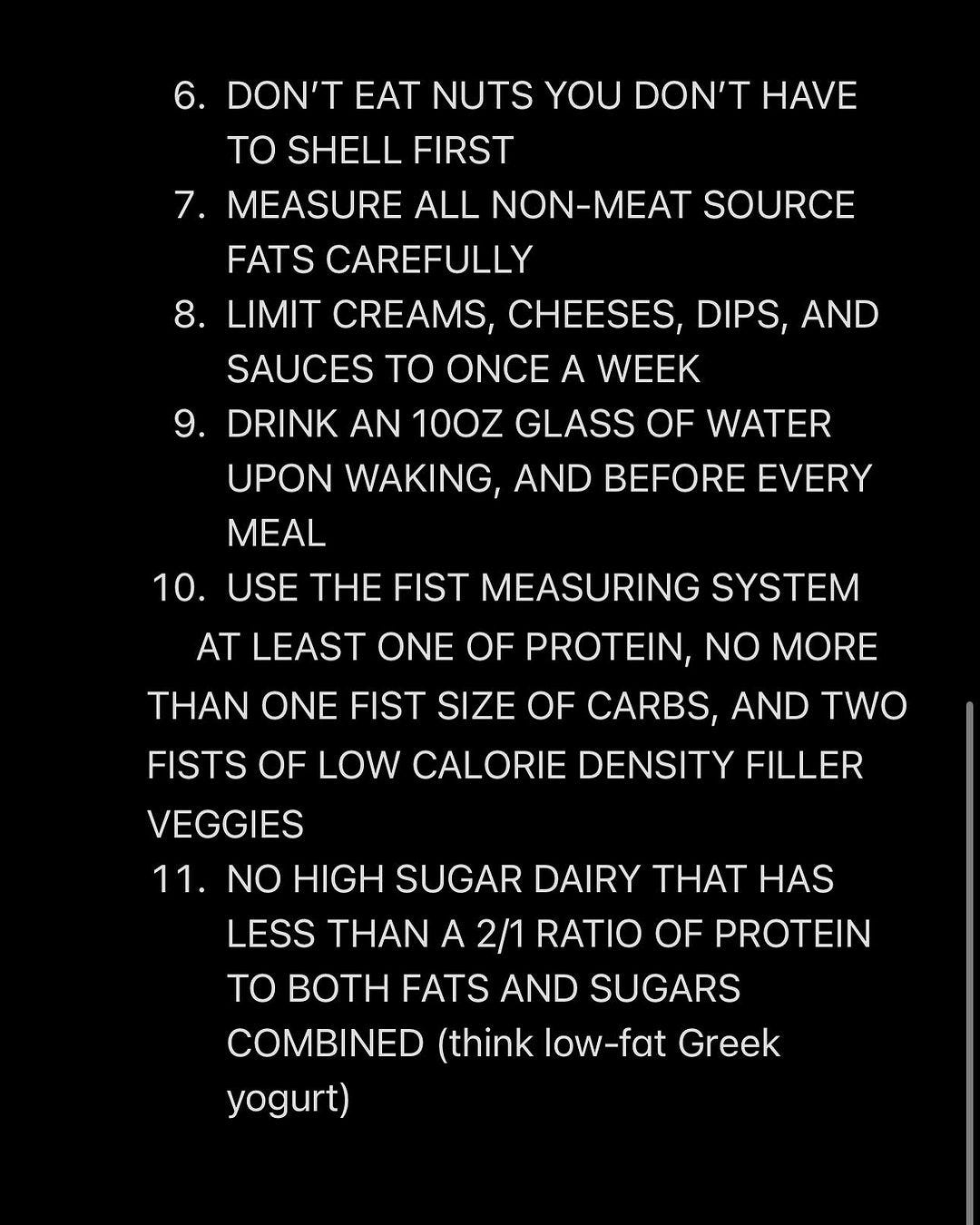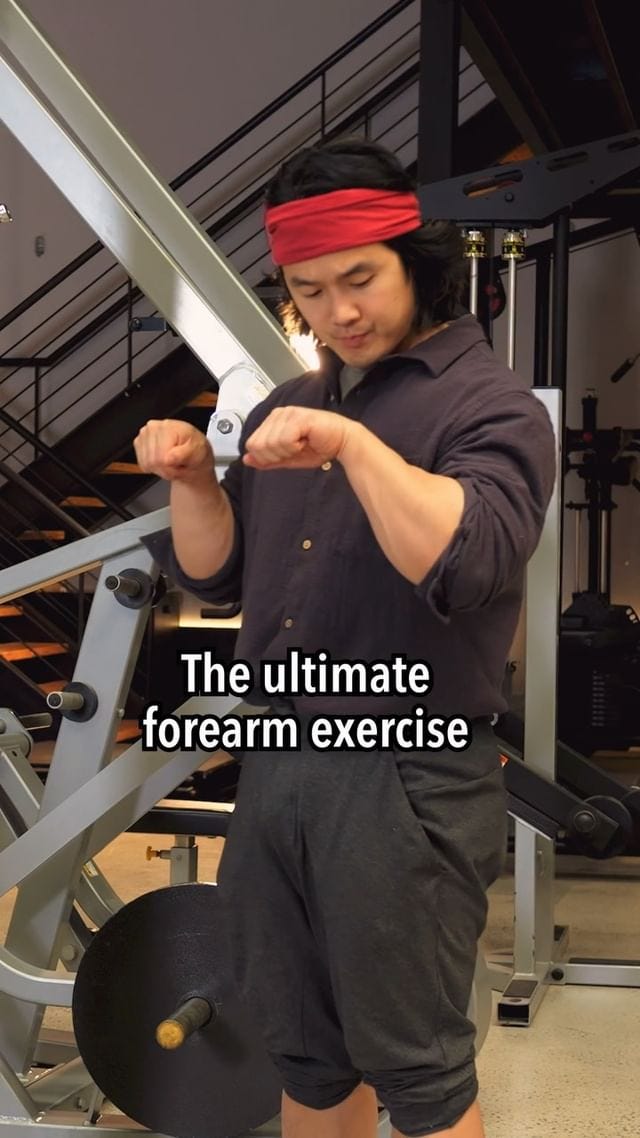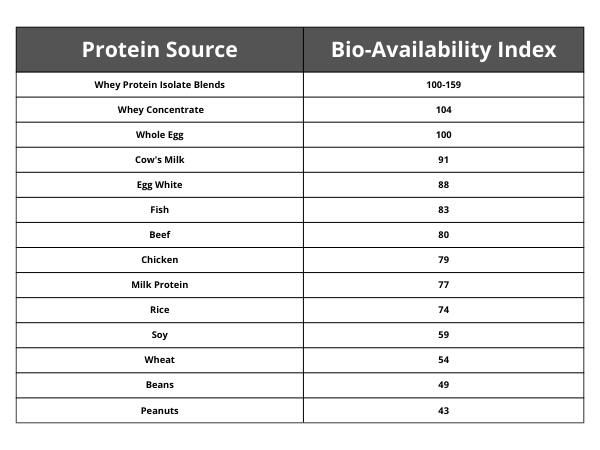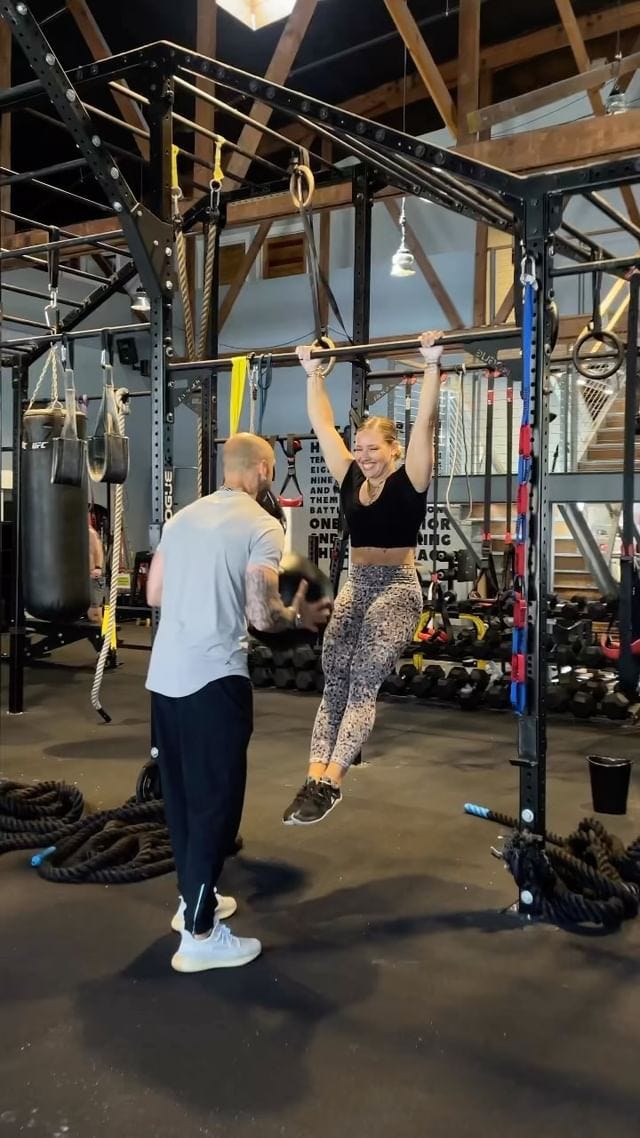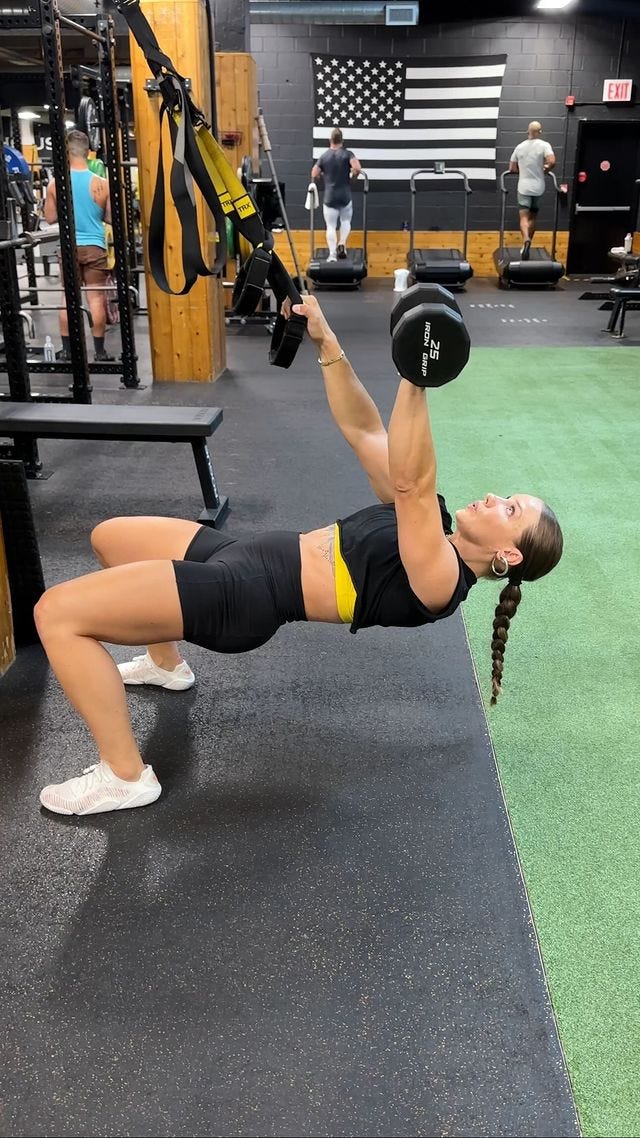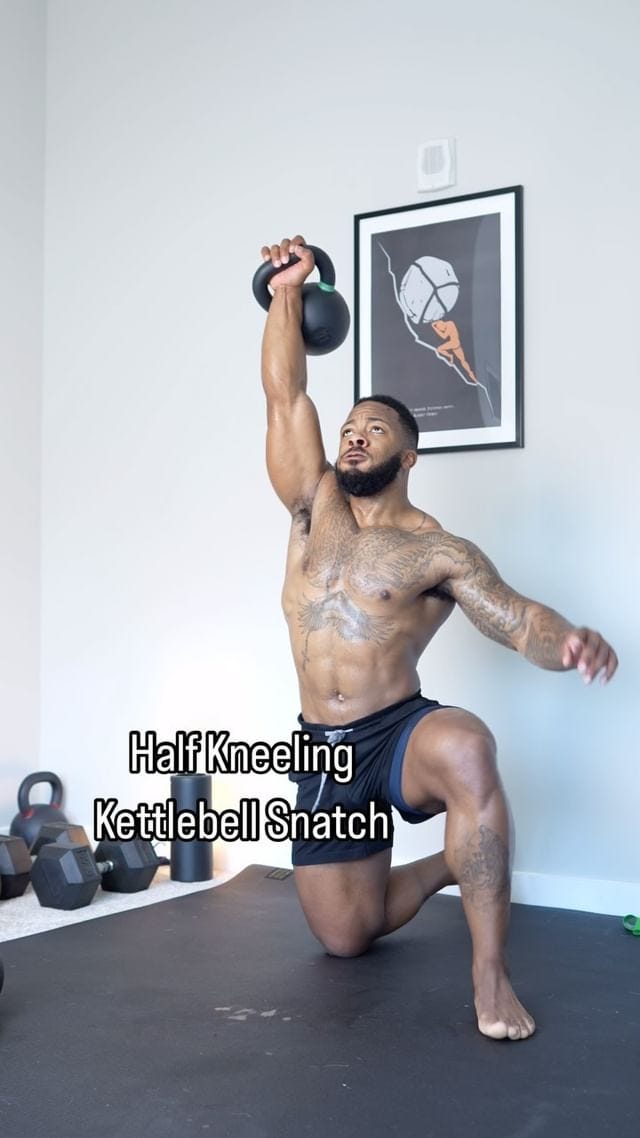21 Reasons Why You're Not Hitting Your Fitness Goals
Realism with Love at Heart, Plus Real-World Advice on How to Get on Track
Welcome to Twenty-Somethings. A guide to food & fitness & taste presented quarterly.
I’m passionate about fitness—almost to a detriment. When I see someone not implementing proper form, I want to go help them. Then, when I leave the gym, I overhear them talking to their friend, saying, “That dude in the Oregon hoodie with his shirt tucked in is definitely on Tren or Deca.”
What other people’s opinion of me (without speaking to me, or getting to know me) is their prerogative. I don’t generally smile—because what is there besides dogs, good food, family, and the random parts or songs/sports games/beautiful women that you can frown a meaningful grin to in today’s society.
Whether you’re neck-deep in your phone, sad because the country chose the greater marketer, or just lack the empathetic notion that separates humans from animals, we’re all going through it to some extent.
Yet, with fitness, truly giving your all every day, can you exert all these pains and traumas and forge a version of yourself that can throw punches back to everyday life.
You can enter the realm, but are you maximizing your time—the only congruent constant that we all have on this good green earth?
Here are some of my thoughts on what is impeding your fitness goals and how you can get to that god-tier you’re striving for:
1. Your Hamstrings Suck:
What differentiates a sprinter and hockey player's legs from the average gym goer? It's the beefy separation on the back of their upper leg. Hamstrings, physiologically speaking, are crucial for knee flexion, knee stabilization, deceleration, and hip extension/rotation. A term many physios love to throw around nowadays is "bulletproofing your knees" and yet most people think that they should double down on quad-dominant exercises like leg presses, extensions, and squats. Wrong.
The lying leg curl, reverse Nordics (on the GHD), slider leg curls, and seated leg curl exercises should be staples in any program, not just reserved for leg days. Starting a back day priming your posterior chain (entire backside musculature from your heel to your neck) sets you up for success for any pulling motion. Chances are you are only doing Romanian deadlifts and a few half-ass leg curl sets at the end/beginning of your total weekly volume. Not gonna cut it. Not only will you improve athletically (sprints are fantastic for hamstring/glute growth ladies), but the hamstrings give a full look to your legs similar to the aesthetic look of developed triceps in the arms.
2. How Many Minutes Do You Actually Train?
We all have busy lives. Different sets of circumstances enable us copious amounts to train every day, or barely any. Regardless, I see this problem far too frequently.
Most people are on their phones, spend way too much time warming up and foam rolling, wasting time between sets staring into the ether, and generally train for maybe 20 minutes in an hour session. Standing around, resting for too much (C'mon you don't need two minutes to recover from a set of preacher curls), and not coming in with a plan supplants any work you do. Cut out the fluff, focus on the major movements that engage the entire body, fire up your CNS, and go. Intensity > Duration.
There’s a reason classes like Barry’s Bootcamp and F45 Training are so popular—they force you to do the workout without distractions. Now, if it takes blacklights, the newest Bad Bunny song pumped up to deafening volumes, and a corny instructor to get you there, so be it. It works.
3. You Don’t Work the Transverse Plane:
When I try to explain fitness to people I try to refrain from what I like to call "trainer speak". Most people do not give a rat's ass about programming, or the physio element of training, they just want to look good and feel good. With that being said, the three planes of motion are critical for everyone to understand. There are the frontal, sagittal, and transverse planes.
Exercises like bench pressing are sagittal movements. Most gym patrons stay in this plane and I can say with great certainty that very few, maybe just athletes, work the all-important transverse plane. Do we as humans just walk in a straight line doing day-to-day activities. No. We shift side to side, foot to foot, and the transverse plane is this side-to-side motion. Incorporate Cossack squats, lateral lunges, and rotational swings and see how much better your knees and back will feel. Great for spine health, and a good set of obliques is nature's weight belt.
4. You Major in the Minors:
To illustrate this point I would like to give flowers to a group I rarely do—powerlifters. Say what you want about how they look, but they are all pretty strong. Powerlifters do the opposite of majoring in the minors, and they only do the majors. Rarely do you see a powerlifter doing accessory movements beyond one set of some cable/machine variation at the end of their session.
On the flipside, I see too many people spinning their wheels spending the majority of their training living in the cable section, or doomscrolling while doing the rounds on the machines. It boils down to this fact: people are lazy. Instead of doing a hundred press down variations, do one hard set of JM Presses/Close Grip Benches super-setted with some weighted chins/dips. Kettlebell clean and press, DB snatches instead of a hundred front and lateral raise variations.
Both are good if you have time to do them, but accessories should be outside of your program.
5. You Look to Social Media Too Much for “Workouts of the Day”
Some say that novelty and variety are the spice of life. While that most certainly is true outside of the gym, when it comes to training, following fitness influencers blindly posting flashy exercises (the funniest one is girls using the Smith Machine to leg press in let’s just say a very “compromising” position) may give you that excitement and impetus to get to the gym in the first place, but is not sustainable.
Much like regular life, you need to realize that doing the same, mundane stuff that works will set you up for success far more than chasing the dragon daily.
6. You Focus on One Area of Fitness
A few years back I read a great book by David Epstein called "Range". In this book, Epstein's main argument is that the best athletes are those who are generalists—people who focus on a wide range of different talents, and in this case sports. Exposure to a breadth of different sports as a youth translated to greater outcomes for the athlete when he/she went pro.
The same argument can be made for fitness, both in the performance side and the aesthetic angle. I get it if powerlifting or Olympic weightlifting is your sport, but the average gym goers I see all train like bodybuilders sans the intensity, gear, and general training knowledge.
Crossfit predicates itself on building great overall athletes, and that style of training builds muscle, athletic ability, flexibility, and endurance. Yet, most of the time I see Crossfiters in a cortisol-induced haze, clutching at their knees, looking frail, and exacerbating postural/movement problems they may have.
Marrying athletic movements, plyo, flexibility, bodybuilding, the programming of strength athletes, kettlebell movements, and implementing endurance training is the sweet spot. You can easily add in some med ball throws in between sets, add in some direct arm work, push the sled around, and bake in a little of everything within the totality of a week’s training total volume.
7. You Don’t Get Your Heart Rate Up
Internal body temperature regulation and firing up your central nervous system is like revving up your energy before flooring it on the highway. You probably walk into the gym, do ten minutes on the bike, elevating your heart rate ever so slightly, then start your first set, wondering why you feel lethargic.
You don’t have to run ten minutes of wind sprints or slave away on the stair-master for thirty minutes. Quick, short interval runs, hops on the turf, or a couple of sled pushes/pulls will do the trick.
Even if that’s not your jam, keeping rest intervals under thirty seconds and super setting/creating complexes are great ways to get your cardio in/build metabolic capacity while saving time and getting added time under tension.
8. If You’re Hate Doing Something, You’re Weak at It:
It's pretty straightforward. When any novice lifter starts, they inevitably hate doing legs. The pain threshold for said workouts is higher, and generally, you don’t get the immediate mirror-muscle feedback you get from upper body days. Yet, this is a tell-tale sign that your body is telling you to train the body part more.
For years, I felt like training core was my weak point. I hated doing Bulgarian Split Squats, and the Stairmaster was the closest thing I saw to hell. Now I do these daily. Yes, daily. Don’t be burdened by dogmatic thinking stating you shouldn’t do certain daily exercises. If you want to improve at something, you must get in your 10,000 hours. Map out the exercises you hate doing the most and do them more often.
9. Don’t Be Married to Certain Exercises:
This might be contradictory to an extent to our last point, but there’s a fine line between exercises you hate doing because you know they are good but are daunting and exercises that just work for your body. I have never gotten much from the 45-degree back extension machine, but instead, I love the GHD. Just because some fitness zealot told you once that you have to barbell bench, squat, and deadlift doesn’t mean you should blindly follow them.
Some of the best gains I have gotten have come from trap bar deadlifting, the incline dumbbell press, and the Swiss bar overhead press, coupled with lunge variations and Zerchers. You have to test things out for yourself and understand what your body responds well to.
In general, I have seen female clients respond better to a full-body circuit-like stimulus, as well as older lifters. Much like our own free will, you are bound to your freedom to train. A session is neither incomplete nor “bad” just because you didn’t barbell squat or overhead press. Chase movement patterns, not exercises.
10.You Have Body Dysmorphia:
These two shirts I see frequently worn by young under 30 dudes are exactly what is wrong with the fitness industry:
Preying on one's insecurities and thinking that one's body—the only vessel that god has given you on this journey of life, is inadequate is not only dangerous for an already feeble male/female mind but it is also a genuine mental health condition outlined in the DSM-5. "Preoccupation with one or more perceived defects or flaws in physical appearance that are not observable or appear slight to others."
Walk around a gym and ask people if they are truly happy with your physique from yoked to skinny to everywhere in between, and the genuine response you get is, "No." The sad part is that you would think that in this hyper-sexualized society we live in where women have to adhere to strict beauty standards it would be them that have the most body dysmorphia, but men suffer from this way more than women through my observations.
It’s always a fruitful task to want to be better, but at some point be happy with the body you have if you truly work hard at it. I’m all for body positivity but at some point being a hundred pounds overweight and falsely gaming yourself into believing you look great has to stop.
11. You Don’t Train Unilaterally:
Single-leg work needs a new PR firm. For years, the picture people have in their heads of single-leg movements is that of a "functional training" guy limply standing on a BOSU ball for core "instability". Scoffs. Not only does single-leg work offer far more stability, and a chance to even out imbalances, but is generally more brutal than unilateral work, hence why people stay away from them. The highest ROI leg exercise I have bloviated ad naseum about is the Bulgarian Split Squat.
Maybe a fraction of the people I encounter do them and program them with increasing load weekly. It's not just that exercise either, single leg RDLs are a godsend for hip mobility (not so much for hypertrophy, but there's more to training than increasing size), single-leg glute bridges grow that peach-like gangbusters, and single-arm snatches/1 arm dumbbell chest presses not only are fantastic exercises that light up your core, they can be pillars of any good program.
Don’t take my word for it? Look at this case study with NFL receiver Christian Watson. He kept getting injuries in his hamstrings, derailing his previous two seasons with the Green Bay Packers, until he found out that one of his legs weighed more than the other and was even higher on his hip bone than the other. He switched his off-season training routine to mostly single-leg work as a means to fix imbalances and gain overall strength. So far he is injury-free this season.
12. You Don’t Diet Right:
If you’re truly serious about dieting and training hard to get the physique you want, you have to make sacrifices. Here’s an 11-step cheat sheet I give to clients who want to get lean without yo-yo dieting year-round.
There are some extremes here, but I have found that a vigorous 6-week cycle of a regimen like this coupled with 40 minutes of cardio (not walking) and training is a foolproof, non-Ozempic, non-Anavar, non-peptide, way to get lean.
We want to get to this level so that we don’t ever have to diet again—we have a foundational understanding of nutrition and still live life without major restrictions.
13. You Push More than You Pull, and You Vertically Pull more than Horizontally:
And in Turn, You Have Rounded Shoulders or Imaginary Lat Syndrome.
The old wive's tale of a 2:1 pulling-to-pushing ratio is overrated, you don't have to be that stubborn in terms of adhering to that notion, but you do want to have more pulling motions than pushing movements for the upper body throughout the week.
These two movements are synergistic, meaning it is advantageous to pair a pull and push together as antagonist movements, but we will take this a step further and stress that you should be pulling horizontally more than vertically. Rows of any sort put the shoulder in a safe plane of motion/ROM, allowing you to retract the scapula and exteriorly rotate your shoulder blades, whereas vertically pulling asks more of the shoulder girdle, further exacerbating the schlumped shoulder look.
15. You’re Not Checking Under the Hood:
This is an epidemic I see not only in the gym but out in public as well—people chugging energy drinks, looking for pick-me-ups, doing juice cleanses, injecting GLP-1 drugs, taking a laundry list of different greens tonics/supplements, all as a means to mask an underlying problem they have internally.
Look in the trash can of your local gym and you’ll find nothing but Celsius’, C4 bottles, Ghost energy drinks, and random remnants of powders that could’ve been a bathroom counter back at Studio 54 in the 80s. I get that coming to work out after a long day of work and other stressors can be taxing, but often when I ask people how they’ve grazed or moved throughout the day is where I find the real culprit.
Taking into too many snacks, too many carbs or even processed fats, added sugars, and over-reliance on caffeine coupled with sitting all day or being sedentary is the real problem. Limit the grazing, stick to meats, fruits/veggies, and take movement breaks. That way you don’t need to be a caffeine addict when the 5 o’clock gym session rolls around. Not only that, the late-day energy drink also tanks your sleep, as the half-life of caffeine is 12 hours.
16. You Neglect the Small Muscles that Actually Matter:
In the grand scope of the human body, the largest muscle is the gluteus maximus. Now ladies will train this body part to an extreme, oftentimes doing 3 glute days while never even attacking their upper body. For men, the complete opposite, as the biceps are their “glutes,” hitting that small body part numerous times a week.
What you need to be incorporating more of is not only glute training (for men), but everyone should be doing more upper back work. The teres minor/major, rotator cuff and the upper back musculature will make your posture more upright, give you more of that shoulders-drawn-back look, and increase your height. Forearm work, neck training, extra calf work (standing rather than sitting), and strengthening your feet are other areas that almost everyone neglect but serve as the lugnuts and firing cables for the rest of your body.
Do These:
Loaded Carries
Wrist Roller
Neck Harness
Standing Calf Raises (1 Foot and 2 Feet w/ a 2-second stretch and bottom and top)
Upper Back YTWs
17. You’re Still Undereating Protein
Much has been made in the past years about the excessive protein diets for longevity from esteemed doctors like Valter Longo and the biohacking community—how it is not good for mitochondrial health and whatnot. Balderdash.
A gram per body weight is the standard, but I have seen the best results with 1.25-1.5x body weight for grams per day. Protein overfeeding is like having a life insurance policy—it gives you a pillar to fall back on, and while you have to pay more for it, it is worth it in the long term.
Quality is what matters here—For years I would take a scoop of protein with my breakfast, pre-workout, and at night. No need. Over 100+ g should come from eggs, meat, legumes, fish, broth, greek yogurt/cottage cheese, etc.. Only 30-50 grams a day from powders. No candy bars disguised as protein supplements either. Just real food. Think about bioavailability—is your body going to take more from that salmon filet or a scoop of your “Blueberry Muffin Protein Powder”?
18. Abs Are Not Made in the Kitchen:
Caveat: abs are not solely made in the kitchen. The ghost kitchen for the procurement of what is known as the rectus abdominus, the six-pack muscles comes from direct ab training. It baffles me how little people train their core and abs. The following are all ways that you can train your core/abs in between sets, or at the beginning or end of a session:
Incline Reverse Crunch
Heavy Med Ball Pullover to Crunch
Farmer’s Carries/ Suitcase Carries/ Overhead Carry Complex
Ab-Wheel Rollouts
Copenhagen Planks
Cable Crunches on an Incline Bench
Hanging Leg Raises/Knee Raises
Med-Ball Russian Twists
Med-Ball Explosive Side-to-Side Slams
When performing any of these blow out as if you blowing out candles after every breath, and make sure your hamstrings/glutes are warmed up before. I like to do a set of hip thrusts with the booty band super-setted with some slide board leg curls to prime the posterior chain for maximum effect.
Ronnie Coleman once famously stated, “Everybody wanna be big, but no one wants to lift heavy ass weight.” Well, “everybody wants to have washboard abs without actually training them (with weight too)”.
Meat + Fruit + 15 sets a week of ab work = Profit
19. You Just Train for the “Look” but Can’t Even Do That Right
Guys: Ask any pea-brained meathead what they strive for in an optimal look and they will state (in this order): “Huge arms, thick shoulders, big chest bro.” Okay, fair. Then you look at their split and it consists of barbell bench presses, an overabundance of cable work—mostly for triceps, some machine flies, and you guessed it—curls of eight different varietals.
To achieve the power look, through my estimation, you need to focus on the following:
All three parts of the shoulder (front, medial, rear), but overemphasize the medial delts through lateral raises, behind-the-neck pressing, and Arnold Presses. Rear delts must not be neglected, and the cable cross-body rear delt fly does this the best.
Delts respond the best with greater time under tension, so don’t be afraid to set up circuits. Do them every day.
Upper Chest: Incline dumbbell presses, crush presses, cable fly variations, incline pushups/ball pushups, and dumbbell floor presses work great.
Upper Back (and Big Traps): There is not a single movement or even a handful that can singlehandedly achieve this, which is why it is so impressive to see a well-defined back. It is a true stamp of someone who has gotten down and dirty in the trenches. Heavy chest-supported rows, one-arm rows, deadlifts for spinal erectors, and high pulls are all great pillars. I especially love the 1-arm dumbbell high pull/explosive upright row supersetted with 1-arm rows and pullovers.
Be Lean with an Impressive Adonis Belt: Diet down to 11 or under body fat percentage, and train your abs as described above. Forget that bodybuilding hogwash that oblique training with make you look boxy. Obliques have more function than achieving that V-cut taper and transfer to hip health and core stability.
Women:
Alternate Upper/Lower Days or do Full-Body Everyday:
This is a matter of preference, but I have found that female clients respond very well to full-body circuit training. As a group, they are not looking to push for personal records every time in, therefore the need for rest can be dialed down, increasing the metabolic effect and getting in good stimulus. Have your cake and eat it too.
Train Upper Body Just As Hard:
The fallacy of gaining weight or looking bulky that some women still have is a misnomer. You should be training your chest, shoulders, back, and all the upper body musculature just as a man does. Doing so will help your posture, make you look taller, and aid in having a proportional physique.
Do More Muscle-Building Cardio:
One thing females do better than men is adhere to a cardio regimen (while sometimes at the expense of the weight-training workout). Do more sled work, Jacob’s Ladder, rower, Ski-Erg, and med-ball work than just slaving away on the Stairmaster.
Train Your Adductors More:
This goes for everyone, but females tend to obsess over the look of the overall thigh muscles, and where fat accumulates is generally around the hips and inner thighs. To tighten the inner thigh muscles and increase stability in the knees and feet while getting in a great combo oblique workout do more Copenhagen planks. Essentially this is a side plank with the feet elevated and one foot hovering. Add in a plate in the lower leg and this will burn your inner thighs way more than the “good girl” machine.
20. Your Mobility is Shit:
If you spend copious amounts of time foam rolling, Theragunn'ing, and doing static stretches to feel good before exercise, then maybe you're just weak and lack mobility. Mobility is more than doing yoga a few times a week or doing a few bird-dogs.
Mobility is the ability to actively take our joints through their full range of motion. A joint is where two bones meet — such as your hips, knees, ankles, and shoulders.
By incorporating regular mobility work into our workouts, we are “greasing” up our joints and taking them through active ranges of motion. This not only helps us move easier and feel better in our bodies, but it also helps to alleviate aches and reduce the risk of future injuries.
I used to have the mobility of a fridge, to the extent that picking something off the ground or doing simple moving would be challenging (from all the accumulated fatigue and lactic acid buildup). The past two years I have made huge strides by incorporating mobility moves into my training, blending them in with strength and hypertrophy.
Training this way allows you to stay injury and pain-free, and moving like a supple leopard just feels good.
21. The 10 Exercises You Aren’t Doing (But Need To):
The 1¼ Trap Bar Deadlift:
https://www.instagram.com/coachmarkcarroll/reel/CyNoQWqx1zE/
Stir the Pots to Stability Ball Pressouts:
Seated Good Mornings:
Half Kneeling KB Snatches / Windmills:
Sir Charles Raises:
Floor Plate Front Raise:
Incline Bench Reverse Crunch:
King Kong Rows:
Zercher Lateral Lunges:
Hollow Body Floor Press:
Kettlebell Floor Press to Kettlebell Skullcrusher Superset:
Finally, while this piece is teetering on a "T-Nation" or "Men's Health" type of article based on a ground of criticism, know that fitness is a lifelong journey and something that while as outward facing as it may seem, is deeply personal.
What works for me might not work for you, what some "evidence-based" bro preaches could be rooted in science, but doesn't meet your tailored needs, and most certainly everything on social media should not be taken as gospel. Go out there, try things out for yourself, then be the judge.
Much like food, the best palates and chefs are not made by eating grilled cheese sandwiches or chicken and rice every night. Experiment, fail, and make epiphanies along the way. Harpen back to the allegory of the tortoise and the hare—we're in it for the long haul, no matter how slow and steady that may be.
+ Playlist of the Week:
+ Final Thoughts:
What do you truly care about? If you got here, please put down five things you are grateful for—pen to paper. Perfect. I am your therapist for the week. I tried to give you my expert thoughts on maximizing your physique, but more importantly, we need to focus on our core—no not your mid-section musculature but what makes you YOU.
I am far from a savant like the Buddhas, Deepak Chokras, Eckhart Tolles’ of the world, but if it is something I have gained in 30+ years of life, is that I focus on the lives of the people I care about, try to maintain an even-keel temper day in and day out (no matter if my car burned down or if I won the lottery), flex my creative muscles daily, exert physically, and not give two damns about the other man is doing.
The phrase “live alone die alone” is quite macabre. But, in some ways, it is accurate. Yet, I want to live every moment on this great green earth smelling the roses (or ferns in this decrepit desert), laughing with friends (or solo), drinking coffee, eating the fruit, and fully embodying the human experience.
Whether that takes me half a bottle of Berbera grapes and a cocktail of infused Texas Peach vodka and coconut “Egg Nog” later… We’ll leave that to the skeptics.
Live everyday like it’s your last. Even if that entails drinking a green juice, watching Love is Blind, and passing out like an old dad a la this SNL skit:


